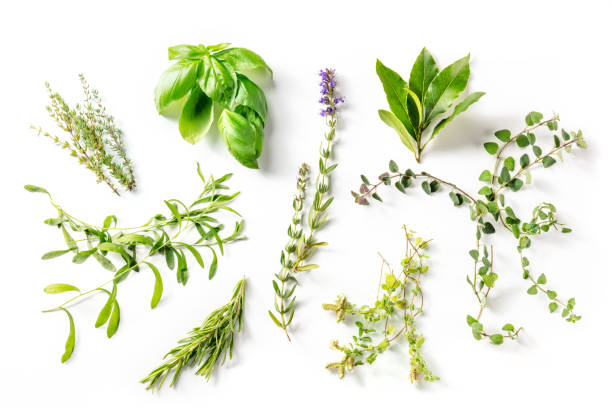Leading the New Storm of Health Industry
2023-11-21 11:41:59
With people's increasing health awareness and continuous technological advancements, the plant extract industry is embracing unprecedented development opportunities. This once-niche market has now grown into an important branch of the global health industry, showing unlimited potential.
History of Plant Extract Development
The development history of China's plant extract industry can be traced back to the 1970s. At that time, some small plant extract production enterprises emerged in China, mainly concentrated in regions rich in medicinal herb resources. These enterprises relied on simple extraction equipment and manual processing methods to produce some medicinal herb extracts for domestic medical and healthcare industries.
In the 1980s, with the deepening of China's reform and opening up, the plant extract industry began to develop and expand gradually. Some large pharmaceutical companies started to get involved in the plant extract field, and introduced some advanced extraction equipment and production technologies, improving the quality and output of extracts. At the same time, some professional plant extract manufacturers also emerged in China, forming an initial industrial scale.
In the 1990s, with people's increasing attention to health and quality of life, the plant extract industry began to develop rapidly. Some large pharmaceutical companies and professional manufacturers began to focus on R&D and innovation, and launched a series of new plant extract products, such as ginkgo biloba extract, coneflower extract, etc. Meanwhile, China's plant extracts also began to be exported to overseas markets, and gradually gained recognition in the international market.
Entering the 21st century, China's plant extract industry has continued to maintain a rapid growth trend. With the continuous expansion of the domestic market and overseas market, the scale of the plant extract industry continues to expand, becoming an emerging industry. At the same time, with the continuous advancement of science and technology and innovation, the production technology and product quality of the plant extract industry are also continuously improving.

Categories of Plant Extracts
According to product form, plant extracts can be divided into plant oils, pastes, powders, crystals, etc.
According to usage, plant extracts can be divided into natural pigment products, traditional Chinese medicine extracts, extract products, and concentrated extract products.
Currently there are nearly a hundred popular plant extracts internationally, the common ones include:
1. Antioxidants: such as grape seed extracts, etc.
2. Immune modulators: such as ginseng extracts, etc.
3. Cardiovascular function improving: such as ginkgo leaf extracts, etc.
4. Sedatives: such as hops extracts, etc.
5. Natural pigments: such as sweet potato extracts, etc.
6. Functional sweeteners: such as licorice extracts, etc.
The categories of plant extracts are diverse, and their application fields are also very extensive. In daily life, we may come across various plant extracts, such as medicinal herbs, food additives, health care products, etc. Understanding the classifications and uses of plant extracts will help us better recognize and utilize these products.
The Main Components of Plant Extracts
The main components of plant extracts vary depending on plant species, but in general, plant extracts contain a variety of chemical components, including the following:
Alkaloids: Alkaloids are a class of nitrogenous basic compounds that usually have specific physiological effects and are one of the earliest plant insecticides used by humans.
Polysaccharides: Polysaccharides are an important component of plant extracts, with immunomodulatory, anti-tumor, anti-inflammatory, and other effects. The most studied polysaccharide types include ginseng polysaccharides, astragalus polysaccharides, mushroom polysaccharides, etc.
Terpenes: Terpenes are a complex class of organic compounds with a variety of bioactivities, such as essential oils, triterpenes, sesquiterpenes, etc.
Flavonoids: Flavonoid compounds contain phenolic rings and pyrone groups, with antioxidant, anti-inflammatory, anti-tumor and other effects, such as flavonol glycosides, isoflavones, anthocyanins, etc.
Phenols: Phenolic compounds contain phenolic rings and hydroxyl groups, with antioxidant, anti-inflammatory, antibacterial and other effects, such as tannins, catechins, etc.
Coumarins: Coumarin compounds have a benzopyranone structure, with anti-inflammatory, anti-tumor, antioxidant and other effects, such as isocoumarin, coumarin, etc.
Fatty acids: Fatty acid compounds containing carboxyl groups have anti-inflammatory, anti-tumor, antioxidant and other effects, such as linoleic acid, α-linolenic acid, etc.
The composition of plant extracts is very complex. Different plants contain different chemical components, and each plant extract has its own unique bioactivities. Therefore, when using plant extracts, it is necessary to make selections based on specific needs and characteristics.

Current Status of the Plant Extract Industry
The plant extract industry is currently a fast-growing industry:
The market scale continues to expand: With people's increasing attention to health and quality of life, the market scale of the plant extract industry continues to expand. According to market research companies, the global plant extract market size is expected to reach $60 billion by 2025.
Diverse varieties of plant extracts: Plant extract varieties are extensive, including alkaloids, acids, polyphenols, polysaccharides, terpenes, flavonoids, alkaloids, etc. Each plant extract has its own unique chemical composition and bioactivity, so selections need to be made based on specific needs.
Extensive application fields: The application fields of plant extracts are very extensive, including food, health care products, dietary supplements, cosmetics, medicines, etc. With technological developments, new application fields of plant extracts are also continuously expanding, such as plant-based plastics, plant-based dyes, etc.
Improving industry standardization: With the continuous development of the plant extract industry, industry standardization continues to improve. Internationally, multiple plant extract associations have been established to formulate a series of industry standards and norms to ensure the quality and safety of plant extracts.
Technological innovation continuously drives industry development: With continuous technological advancements, the plant extract industry is also continuously innovating. New extraction technologies and equipment continue to emerge, improving the quality and yield of extracts. At the same time, the application fields of plant extracts are also continuously expanding. Technological innovation will become an important driver for the development of the plant extract industry.
The plant extract industry is currently in a rapid development stage, with continuously expanding market scale, extensive application fields, improving industry standardization, and technological innovation continuously driving industry development. In the future, the plant extract industry is expected to become an important branch of the global health industry.
